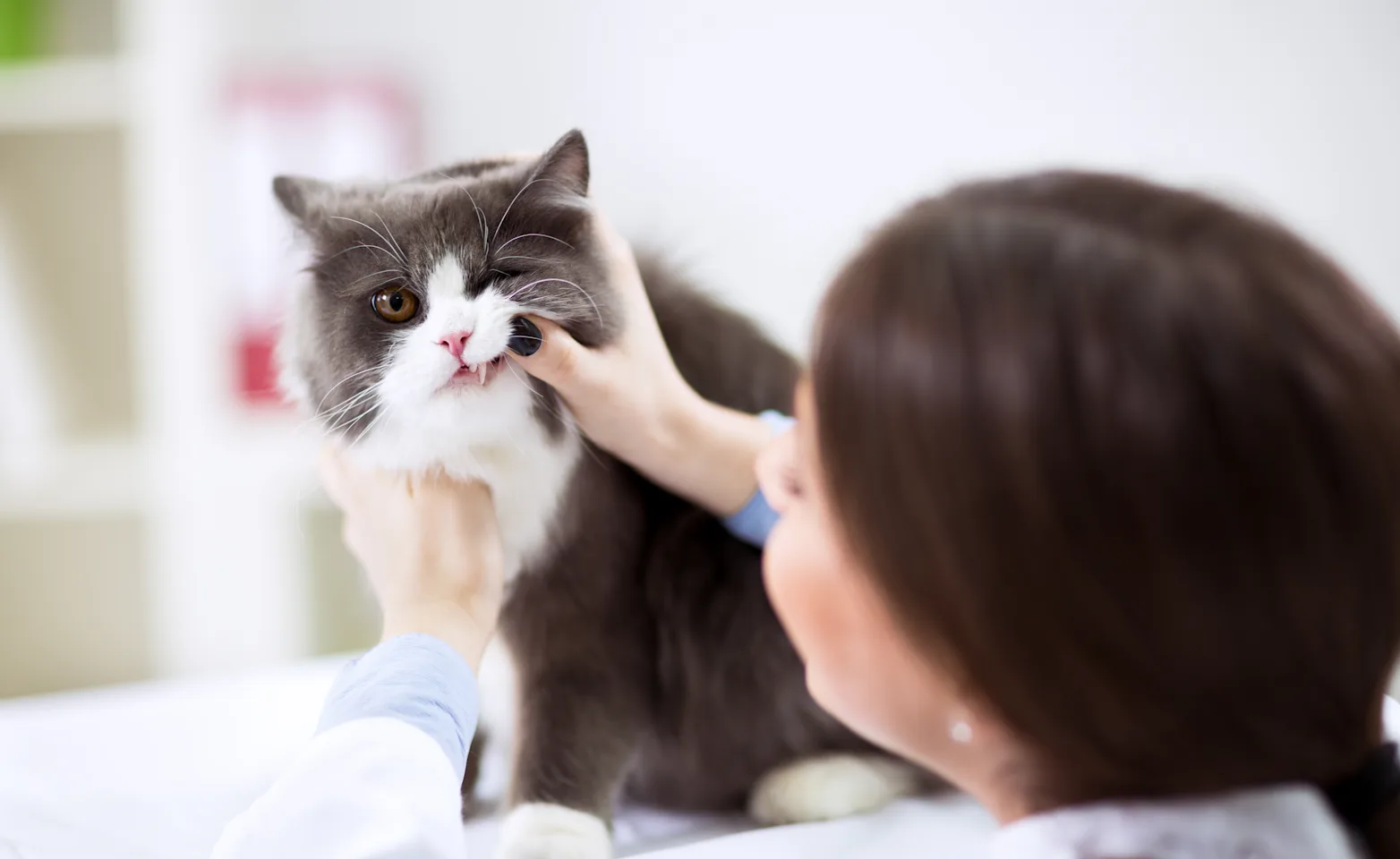Hometown Animal Hospital

Feline Periodontal Disease

What is periodontal disease?
Periodontal disease is the infection of the tooth attachment apparatus (periodontal ligament and jaw bone), caused by bacteria. It begins when bacteria form on teeth in a substance called plaque. If plaque is not removed, the plaque is calcified by the minerals in saliva to become calculus (or tartar) and it will start to move under the gum line. Once the plaque gets under the gum, it starts causing inflammation ("gingivitis"). Gingivitis is the initial, reversible form of periodontal disease. Gingivitis may be painful to your pet and may lead to premature tooth loss. If this inflammation is not controlled, the bacteria within the gingiva change to a more virulent type. These more virulent species create more severe inflammation that leads to irreversible periodontitis. Periodontitis may not painful to your pet, so you may not aware of the disease until it is too late.

How can I prevent it?
The best way to prevent periodontal disease in your cat is through the use of appropriate procedures and/or techniques to prevent dental and oral disease. Caring for your cat's teeth and gums is vital to the health of your cat to remove the plaque and tarter that accumulates each day. Please contact our veterinarians to tailor a program for your pet.

Stage 1
In stage 1 periodontal disease (also called "gingivitis"), the gums are inflamed but there is no evidence of support loss. Treatment involves plaque and calculus removal under general anesthesia plus daily plaque prevention. Follow up recommendations include twice a year dental examinations

Stage 2
In stage 2 periodontal disease ("early periodontitis"), the tooth begins to lose its support. Treatment involves removal of plaque and calculus, specific periodontal therapy based on examination findings as well as daily plaque prevention.

Stage 3
In stage 3 moderate periodontal disease, painful loss of tooth support has progressed to the point that either advanced periodontal procedures or extraction is needed.

Stage 4
In stage 4 advanced periodontal disease, greater than half of the tooth's support is lost. Extraction is the treatment of choice to eliminate pain and inflammation.

Furcation Exposure
Established and advanced periodontal disease can result in loss of bone support where the roots of multi-rooted teeth meet. Once furcation exposure has occurred, tooth extraction is the treatment of choice.

Periodontal Pocket
Occurs when there is a support defect where the upper canines lie next to the hard palate. If left untreated, the defect can extend to the nose causing loss of the canine tooth (teeth).

Gingival Recession
Gingival recession occurs secondary to periodontal disease exposing the tooth root(s). If the tooth is also mobile, extraction is the treatment of choice.
